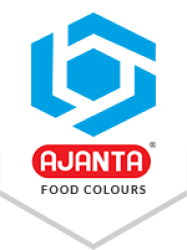Germany, officially known as the Federal Republic of Germany (FRG) is a vast country situated in central Europe. The country is renowned for its rich history, cultural festivals, and robust economy. Germany shares its land borders with Denmark to the north, Netherlands, Belgium, Luxembourg, and France to the west, Switzerland and Austria to the south, and Czech Republic and Poland to the west. Germany also shares a maritime border with Sweden in the north and the United Kingdom in the northwest.
Manufacturing industries in Germany play an important role in its GDP. The country has various small and large-scale manufacturing industries, such as those producing food, cosmetics, pharmaceuticals, animal feed, personal care, home care products, and more. In the manufacturing of any product, various components play important roles. Some contribute to the product's manufacturing, while others contribute to its appearance and final look. One of the components that play an important role in product appeal is colour.
Colours provide an appealing and vibrant look to products that attract consumers' attention and help with product sales and brand recognition. Germany does not manufacture enough colours to fulfill domestic demand. To meet this demand, Germany imports colours from countries such as India, Australia, Turkey, and China.
German Industries Where Colours Play a Vital Role
In Germany, colours play a crucial role in various manufacturing industries and make the products attractive to consumers that boost sales. Here we discuss some German manufacturing industries where colours play an important role.
Food and Beverages Industry
In Germany, colours play an important role in the food and beverages manufacturing industry as they provide an appealing look to various food products such as confectioneries, baked goods, processed food, and many types of drinks. Still, German food manufacturers often face challenges in selecting the right colours for their products. They want high-quality food colours that provide a vibrant and appealing look and do not fade or change over time. Synthetic food colours overcome these problems for German food manufacturers. Synthetic food colours come in many different vibrant shades, allowing manufacturers to differentiate their products from competitors by enhancing their appearance and appeal. This also helps with product recognition and boosts sales. Most of the food and beverages manufacturing industries in Germany are located near big cities like Cologne (Köln), Düsseldorf, Hamburg, Frankfurt, Munich (München), Stuttgart, and Nuremberg (Nürnberg). According to Statista, the revenue of the food market amounts to US$246.00 billion in 2024, and the market is expected to grow annually by 3.63% (CAGR 2024-2029).
Cosmetics Industry
In the German cosmetics industry, colours play crucial roles. They provide an appealing and fun look to various cosmetic and personal care products such as lipsticks, foundations, mascaras, eyelashes, blushers, nail polish, moisturizers, soaps, and more. However, cosmetic manufacturers in Germany often face challenges in selecting the right colour for their products. Manufacturers want premium quality colours that provide an attractive and vibrant look to their products and do not fade or change over time. Synthetic cosmetic colours overcome these challenges for German cosmetic manufacturers. These high-quality pigments come in different vibrant and bright colours, allowing manufacturers to create unique coloured products that increase brand recognition and sales. Most of the cosmetics manufacturing industries in Germany are located in Düsseldorf, Frankfurt, Hamburg, Munich (München), and Stuttgart. According to Statista, the revenue of the Beauty & Personal Care market in Germany is projected to reach US$20.27 billion in 2024, and the market is expected to experience an annual growth rate of 1.23% (CAGR 2024-2028).
Pharmaceuticals Industry
Colours play an important role in the pharmaceutical industry in Germany. They provide an appealing and bright look to various medicines such as capsules, tablets, drops, syrups, and supplements, making them distinguishable for patients and chemists and reducing the chances of wrong medication. However, German pharmaceutical manufacturers often face some challenges in selecting the right colour for their products. Manufacturers want high-quality stable colours that fulfill all the regulatory guidelines of governmental bodies that check the quality of colours for human consumption. Synthetic food-grade colours are the best option for German pharma manufacturers to overcome their challenges. Synthetic food-grade colours come in different vibrant shades, providing stability to medicines so they do not leak or bleed over time. Most of the pharmaceutical manufacturing industries in Germany are located near Frankfurt, Leverkusen, Düsseldorf, Munich, Berlin, and Mannheim. According to Statista, the revenue of the Pharmaceuticals market in Germany is expected to reach US$39.71 billion by 2024, and the market is expected to grow to US$50.12 billion by 2029 with an annual growth rate (CAGR 2024-2029) of 4.77%.
Chocolate Industry
In Germany’s chocolate manufacturing industry, colours play a very important role. Colours make chocolate more appealing and fun, especially for women and children, who consume more chocolate. Even so, German chocolate manufacturers often face challenges in selecting the right colour for their products. They want premium colours that provide vibrant hues and do not fade or change over time. Synthetic food colours can overcome all the challenges of German chocolate manufacturers. Synthetic food colours provide a vibrant and appealing look to chocolates, making them attractive to consumers and helping with product sales and brand recognition. These colours come in various shades, allowing manufacturers to differentiate their products from competitors and create a brand identity. In Germany, most of the chocolate manufacturing industries are located near big cities like Cologne, Düsseldorf, Bonn, Hamburg, and Nuremberg. According to Statista, the revenue of the chocolate confectionery market in Germany is projected to be US$8.78 billion in 2024, and the market is expected to grow annually by 2.86% (CAGR 2024-2029).
Animal Feed Industry
Colours also play an important role in the German animal feed manufacturing industry. They provide an appealing look to various types of feed, such as poultry, swine, or cattle, encouraging animals to eat properly and stay healthy. However, animal feed manufacturers often face challenges in selecting the right colour for their products. Manufacturers seek high-quality colours that provide an appealing look and do not fade or change over time. German animal feed manufacturers overcome these challenges by using synthetic food colours in their products. Synthetic food colours come in different vibrant shades that do not fade or change over time. By using different shades, manufacturers differentiate their products from competitors and stand out in the market. In Germany, many colour suppliers, distributors, and merchants import colours from other countries at low prices and sell them at high prices in the country, making a profit on each sale. Some suppliers, distributors, and merchants sell the colours under the same brand name from which they bought them, while others create their own labels and sell under their branding. Most of the pet food manufacturing industries in Germany are located in Hamburg, Münster, Cologne, Düsseldorf, Osnabrück, and Aachen. According to Statista, the revenue of the Pet Food market in Germany is projected to be US$5.86 billion in 2024, and the market is expected to grow annually by 2.34% (CAGR 2024-2029).
Cultural Preferences of Colours in Germany
In Germany, people have cultural preferences for colours that reflect a blend of tradition and modernity that influence various industries such as food, cosmetics, pharmaceuticals, and more. German consumers often associate colours with specific qualities and values. For example, yellow and red symbolize energy and fun, making them popular choices for food products. In cosmetics, pink and muted tones are preferred to suggest sophistication and understated elegance, appealing to a sense of refinement and quality. On the other hand, blue is mostly used in pharmaceutical products that evoke trust and reliability to enhance the perception of their effectiveness and safety. German manufacturers are aware of these cultural preferences and use colours accordingly to increase brand recognition and sales in the German market.
Regulatory Guidelines on Colours in the German Market
In Germany, the quality and safety of colours in products like food, cosmetics, and pharmaceuticals are overseen by several governmental bodies, depending on the specific type of product. For food and animal feed products, it is the Federal Office of Consumer Protection and Food Safety (BVL). For cosmetics, the oversight is primarily by the Federal Ministry of Health (BMG) under the EU Cosmetics Regulation. In pharmaceuticals, the Federal Institute for Drugs and Medical Devices (BfArM) and the Federal Institute for Risk Assessment (BfR) are involved in ensuring safety and quality, including the assessment of colours for human consumption.
In Germany many startups were opened every year but not all of them become successful. Startups face challenges such as competition with established products, pricing, and consumer trust. German startups can overcome many challenges by using only high-quality colours in their products. Synthetic food colours come in different colour shades that help manufacturers to create different and unique coloured products so people easily recognize their products and help manufacturers in brand recognition and sales. These colours are more affordable compared to other alternatives which allows manufacturers to launch their products at competitive prices.
If you are a manufacturer or startup business looking for high-quality colours to enhance your product identity and boost sales, consider Ajanta Food Colours, a leading synthetic food colour manufacturing company in India. With over 75+ years of experience, Ajanta offers a comprehensive range of Supra colourants for various applications, including food, cosmetics, pharmaceuticals, animal feed, personal care, and home care products.
Ajanta Food Colours uses the latest technologies and machinery in all its manufacturing processes to ensure the quality of its colours. These state-of-the-art machines include ICP OES to detect heavy metals in raw materials and finished goods, high-performance liquid chromatography for organic impurities, UV spectrometry to analyze pigment content and strength, absorbance curves of colours, thin-layer chromatography, vacuum ovens for LOD tests, humidity detection in products, and colour matching machines, along with other instruments for complete testing of raw materials and colours. Moreover, Ajanta provides personalized help and support to its clients, enhancing their experience and building loyalty. Ajanta Food Colours is the best option for Indian business owners, startups, and manufacturers seeking high-quality colour solutions for their products. Apart from this, Ajanta provides personalized help and support to improve client experiences. The company focuses on customer satisfaction and loyalty, making Ajanta Food Colours the best option for German businesses and manufacturers looking for high-quality colour solutions.
For quality and customer satisfaction, Ajanta Food Colours has received various awards and certifications from Indian governmental bodies and other countries where Ajanta exports its high-quality colours. Some of these include The Arch of Europe Award, the Bureau of Indian Standards (BIS) Award, certifications from The Food Safety and Standards Authority of India (FSSAI), the US Food and Drug Administration (US FDA), as well as Halal, Alcumus ISOQAR, Star-K Kosher, Food Safety System 22000 (FSSC 22000), and ISOQAR certifications, among others.
To know more about Ajanta Food Colours and its high-quality colourants, or for any other information please contact us today!





_1723464792.jpg)